A dichroic beam splitter is a specialized optical component used to split a beam of light into two separate beams based on the wavelengths of the light. "Dichroic" refers to the property of the component to selectively transmit or reflect light depending on its wavelength.
In most cases, dichroic beam splitter is made of a material that has different refractive indices for different wavelengths of light. The surface of the beam splitter is coated with a thin film that selectively reflects certain wavelengths of light while transmitting others. This coating is designed to have high reflectance for one wavelength range and high transmittance for another wavelength range. When a beam of light strikes the surface of the dichroic beam splitter, the angle of incidence determines how much of the light is transmitted and how much is reflected. This angle is usually carefully controlled for optimal performance.
Due to the dichroic properties of the coating, the beam splitter separates the incoming light into two beams: one that is transmitted through the splitter and another that is reflected. Each of these beams contains different wavelengths of light, depending on the design of the beam splitter.

Fluorescence imaging is a powerful tool in medical research and clinical practice, offering high sensitivity, specificity, and spatial resolution for visualizing biological processes in living organisms. Stokes shift is a phenomenon commonly observed in fluorescence. It refers to the difference in wavelength between the absorbed and emitted photons of a fluorescent molecule. When a molecule absorbs light, it transitions to an excited state before returning to its ground state and emitting light. However, due to energy loss through processes like vibrational relaxation, the emitted light typically has a longer wavelength (lower energy) than the absorbed light.
The Stokes shift is the difference in color between the light absorbed by a fluorescent substance and the light it emits. It's often visualized as a shift to longer wavelengths (lower energy) in the emitted light compared to the absorbed light.
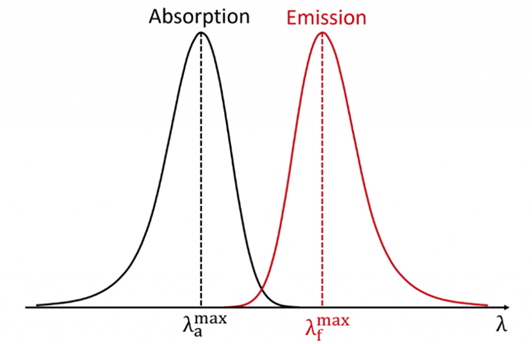
A Zemax model of dichroic beam splitter is shown below. In this model, when a ray is bulk scattered inside object 2, its wavelength is also shifted from blue to red. Then the dichroic beamsplitter separates the two wavelengths out.

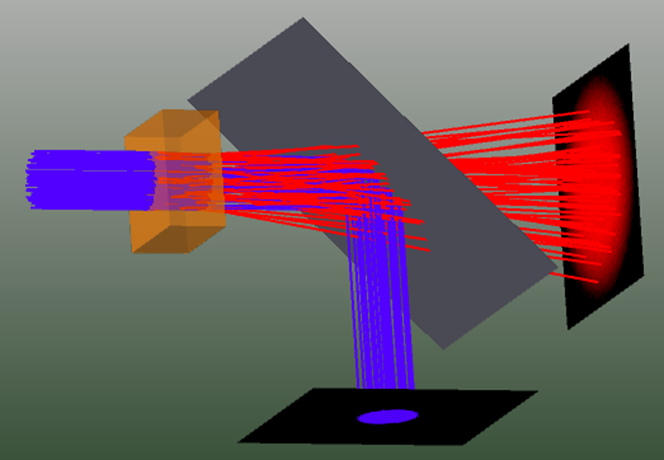
In the 3D light model, the “split NSC rays” and “scatter NSC rays” must be selected.
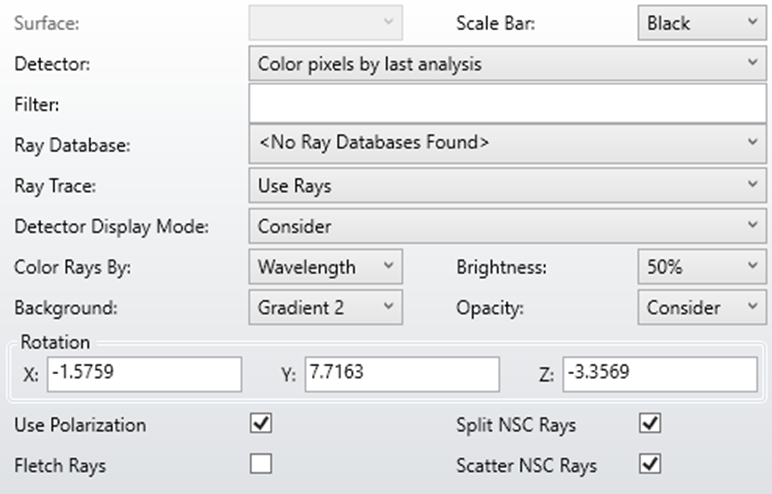
Object 2 was assigned angle scattering with 10 degrees. The mean path between scatter events is 0.5 mm. The wavelength shift control allows definition of wavelength transitions during bulk scatter events. This feature is primarily used for modeling fluorescence. The syntax is "in, out, prob" where "in" is the input wavelength number, "out" is the output wavelength number, "prob" is the relative probability that this shift will occur when tracing the in wavelength. A single input wavelength (#1) will shift to another single wavelength (#2): "1,2,1".

Figures below show the detected light from the dichroic beam splitter in both transmitted and reflected paths.
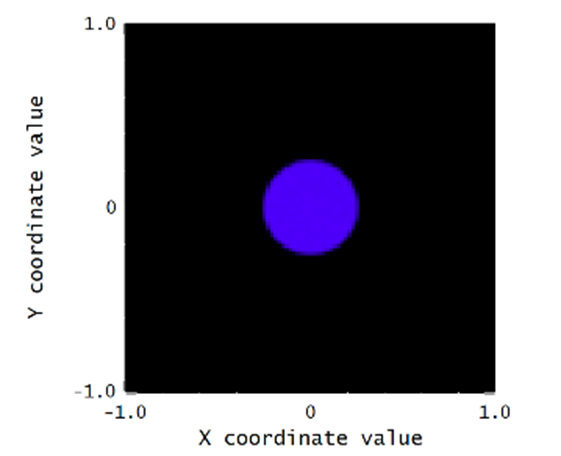
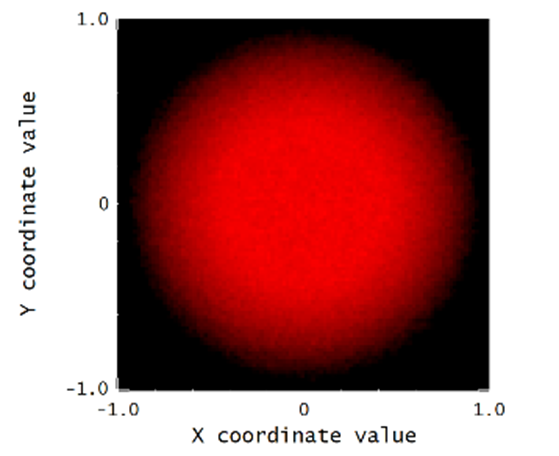
Apr 8, 2024 8:46:46 AM
